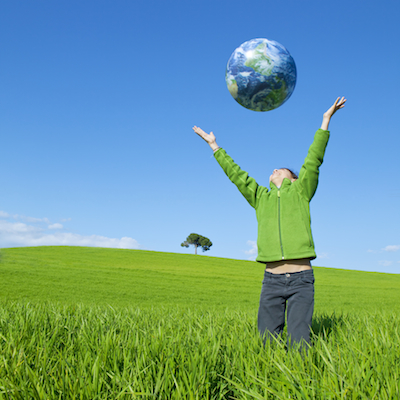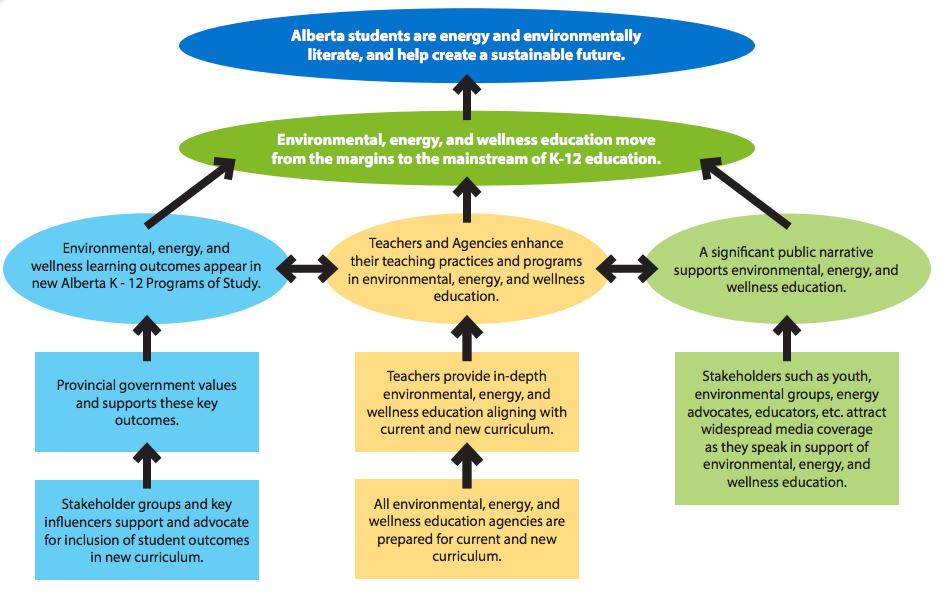Champion Environmental Education
The health and wellness of Albertans relies on a healthy environment. Environmental education is a vital strategy to ensure people understand the interconnections between environment, economy and society – a key requirement for a society that wishes to create a sustainable future.
Alberta Education is developing new K-12 curriculum – this presents a unique opportunity to ensure that environmental, energy and wellness education becomes an even more central component of future curriculum. Alberta’s 40,000 teachers will teach environmental, energy and wellness education if it is in the curriculum.
We all need to become champions of environmental education to move environmental, energy and wellness education from the margins to the mainstream.

Benefits of environmental education
Working with the Education System
What is environmental education and environmental literacy?
Environmental education and a sustainable energy future
Our Ask
To improve K-12 education in Alberta, to create a sustainable future, and to move environmental, energy and wellness education from the margins to the mainstream, we ask Alberta Education to develop new curriculum that…
- Embraces and integrates student learning outcomes from the Curriculum for a Sustainable Future
- Encourages the relevant activities and skill development opportunities:
- supports inquiry learning, integrated learning and experiential learning
- promotes learning in the outdoors using green spaces in school yards, local green spaces and provincial natural spaces
- encourages student-centred activities that allow them to practice citizenship and other skills
Our Offer
ACEE and the environmental education community have developed:
- Curriculum for a Sustainable Future that outlines the learning outcomes needed for environmental, energy and wellness education to create environmental and energy literate students with a healthy natural connection.
- Teaching and learning resources, and teacher support to implement current and new curriculum directions
Benefits of environmental education
Below we list seven research-based benefits of including environmental education in K-12 curriculum. Environmental education…
- Supports the new curriculum. Environmental education is a perfect vehicle to deliver the new curriculum. It already does what the new curriculum will be outlining for teachers: it promotes cross-curricular learning that is focused on competencies that help students become ethical citizens, engaged thinkers with an entrepreneurial spirit.1
- Improves academic performance – student achievement in reading, writing, math, science and social studies increases when the environment is used as an integrating context.2 Student exposure to natural features increases standardized test scores and graduation rates.3
- Improves the development of core skills – supports skills such as observation, problem-solving, reasoning, categorizing, creativity, imagination, and risk-identification.4,5 Environment-based education improves critical thinking.6
- Connects to community and real-world applications. Environmental education allows students to see the ‘big picture’ by integrating many subjects in a cross-curricular approach, and can help students see real-life connections to their learning - particularly when connected to the local community.7
- Increases student engagement and enthusiasm for learning – environmental education increases student engagement and enthusiasm for learning, and reduces absenteeism and disruptive behaviour.8
- Encourages healthy lifestyles – activities in nature help lower blood pressure, strengthen the immune system, reduce stress levels, and help maintain physical, mental and emotional well being.9,10 Access to green space helps reduce obesity.11
- Contact with nature supports healthy child development and supports a lifelong relationship with nature – time spent in nature leads to healthy childhood development in three domains: cognitive, social and emotional.12 Students’ experiences with nature help create a lifelong relationship that supports stewardship.13
Download a PDF version of Why environmental education: Moving environmental education from the margins to the mainstream of K-12 education in Alberta.
Working with the Education System
The Education System is a complex system with a variety of stakeholders. Alberta Education sets the direction of curriculum that outlines what teachers will teach and what students will learn. If we want Alberta students to be environmental and energy literate with a healthy natural connection, we need to work with the education system to create change. Outlined below is what we think needs to change to achieve this goal.
What is environmental education and environmental literacy?
All children have a natural affinity with nature, as they connect with the joy, wonder and beauty of the natural world. Environmental education is the learning process that builds on this natural affinity to create environmentally literate citizens. Environmental literacy has three elements:
- Interdependence – understanding the interconnections and interdependence between ecological and social systems and the impact on personal and collective well being
- Diversity – valuing the significance of biological and cultural diversity as well as diverse perspectives
- Responsibility and citizenship – furthering society by investigating, evaluating, designing, creating and implementing ideas for a sustainable future
Environmental Education Definitions
Environmental Education and a sustainable energy future - how do they connect?
- In Alberta, “energy and environment are two sides to the same coin.” Our work to help create a sustainable future for Alberta needs to embrace both environmental education and energy education – this is sometimes called ‘education for sustainable development.’14
- Energy education and environmental education must advance in lockstep, in a way that links, relates, and finds synergies in these two areas.
- We define an energy literate person as someone with the requisite knowledge, skills, and attitudes to make sound decisions that involve energy as it relates to environment, society, and economic factors – both in the short term and in the long term. This relates to Alberta Education’s literacy definition, which holds that “…today’s learners must develop expertise with a wide range of skills and strategies to acquire, create, connect, and communicate meaning in an ever-expanding variety of contexts.”15
- Energy literacy is an outcome; energy education is the process that increases the learner’s energy literacy.
- Our work to deliver on what this looks likes for K-12 students
Champion Environmental Education engagement sessions 2013
We ensure that all our work in this area adheres to the relevant CRA Regulations for Charities.



